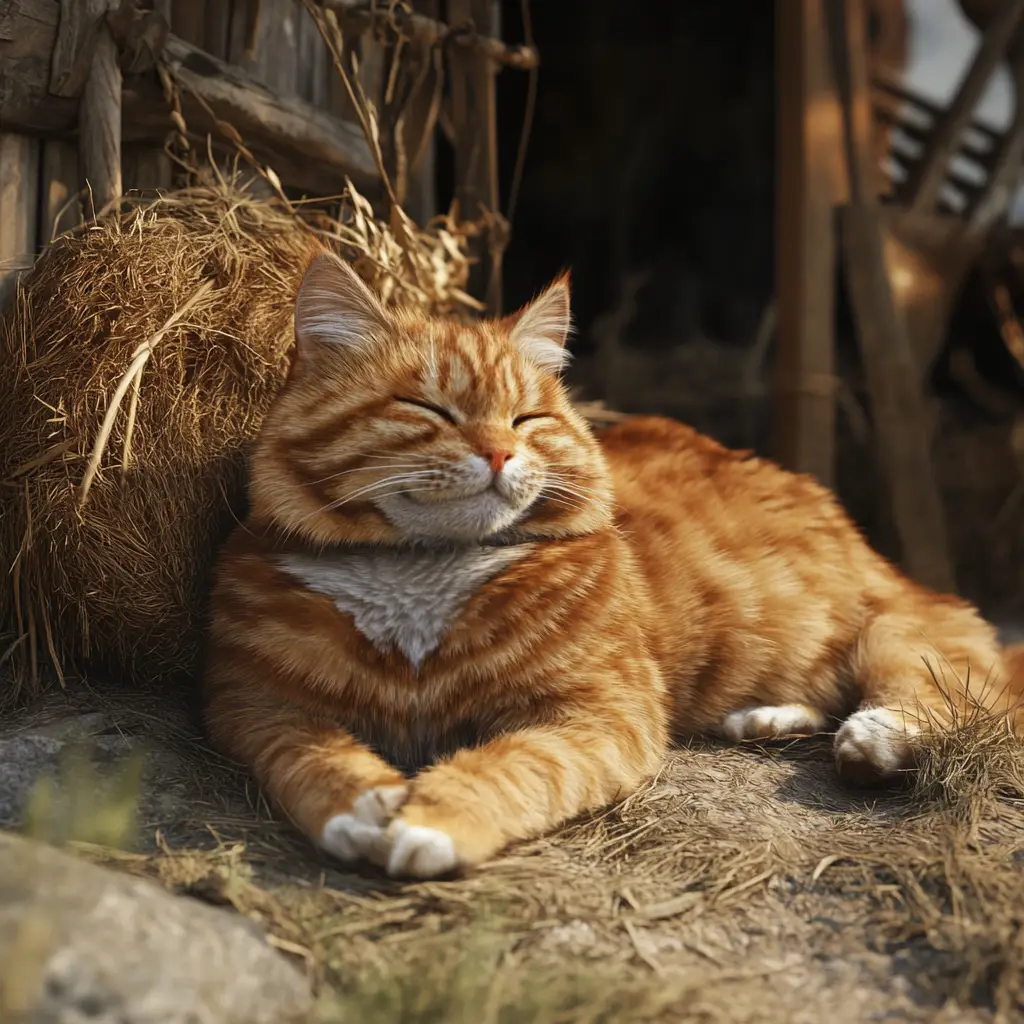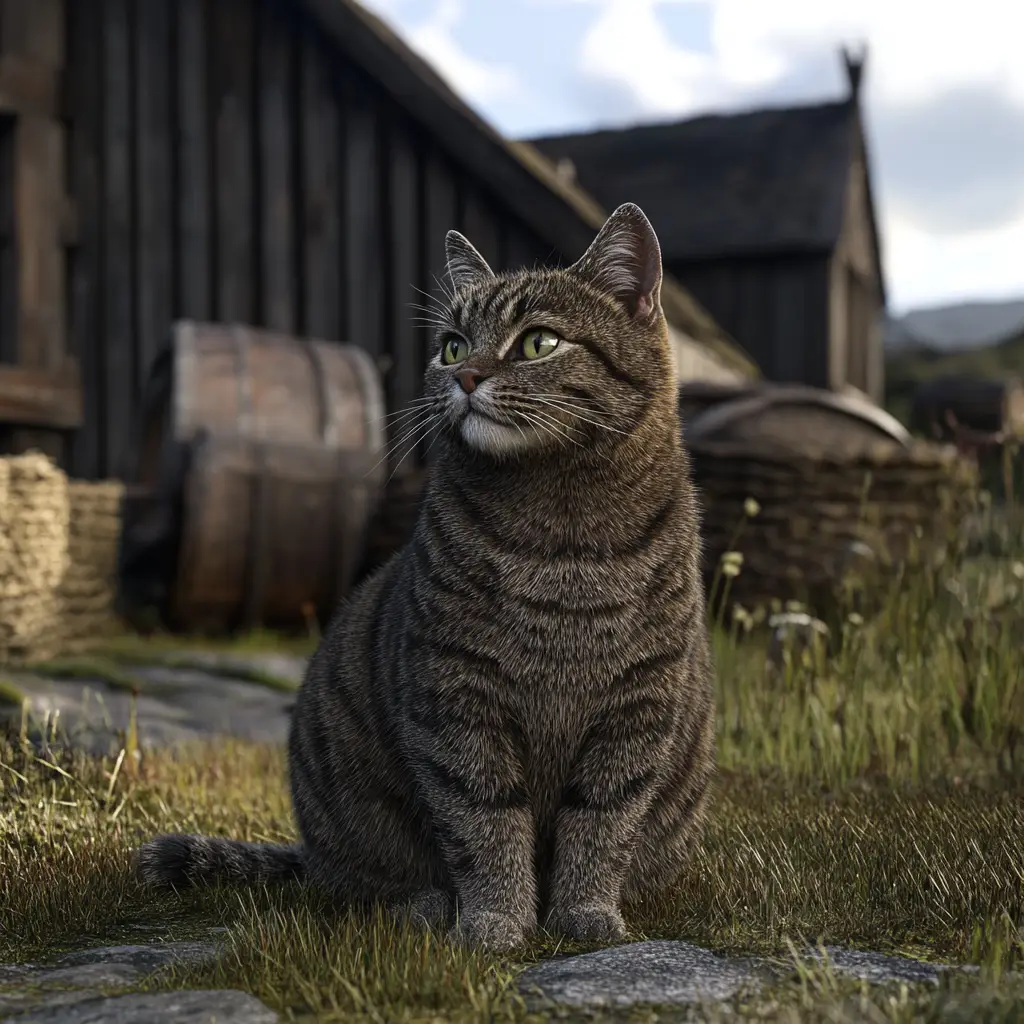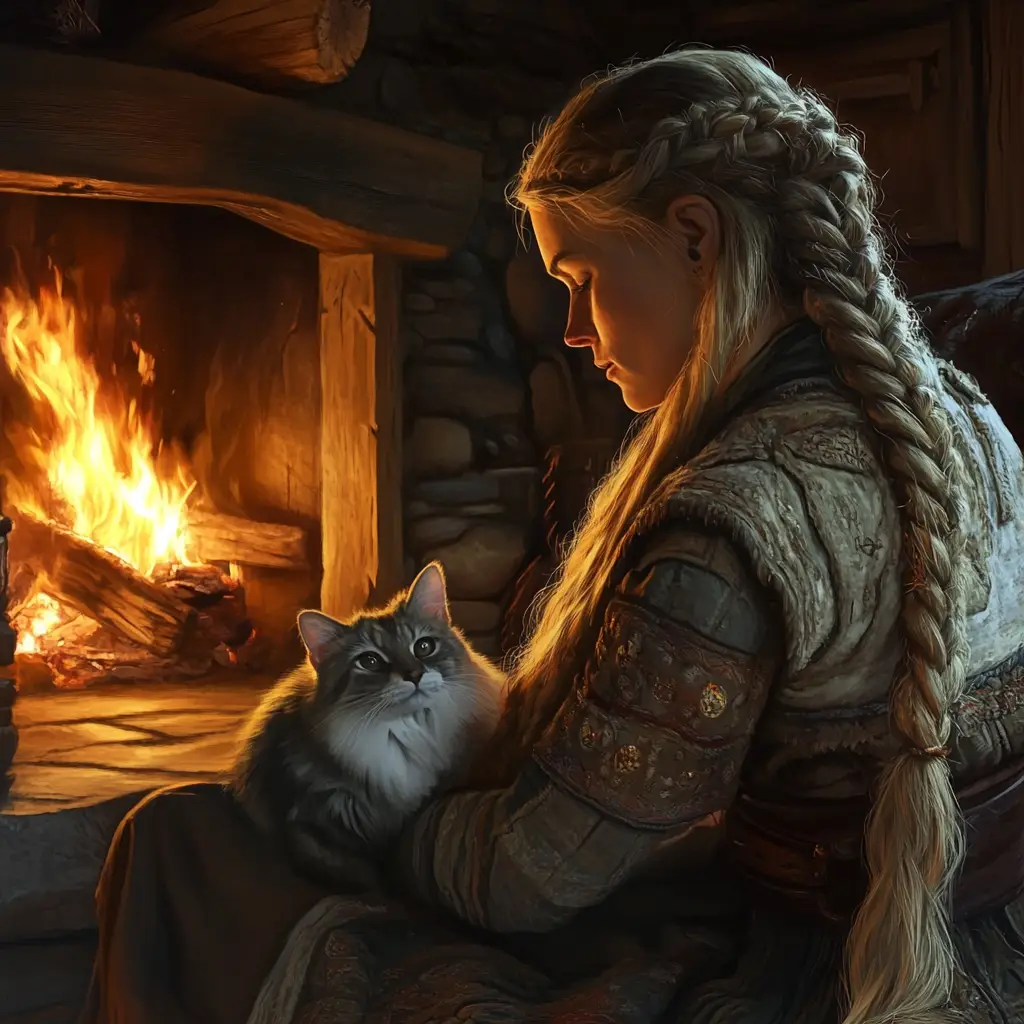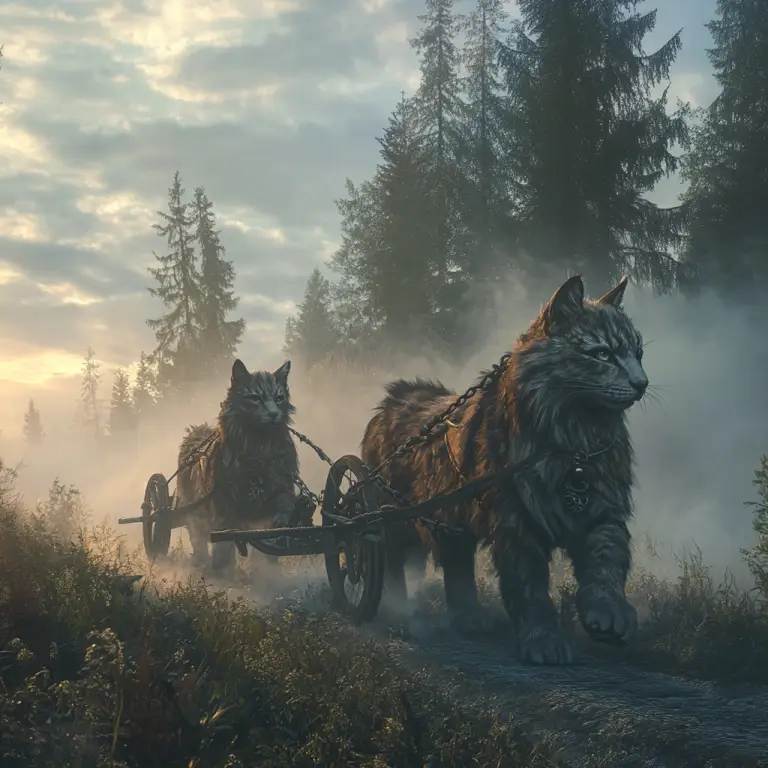Cats in Viking Life
Cats held a notable place in Viking society, both practically and symbolically. While they were not as central to Norse culture as some other animals, they were respected, useful, and even associated with the divine.
Practical Companions
Cats were primarily kept for their usefulness. In Viking homes, especially on farms and in rural areas, cats helped control pests such as mice and rats. This made them valuable in protecting food stores, especially during long winters when supplies had to last for months.
Viking settlements often stored grains and dried food in wooden buildings or storerooms, and cats were essential for keeping vermin away. Their hunting instincts and independence made them ideal for this role.
Symbolism and Norse Mythology
In Norse mythology, cats were linked to the goddess Freyja, one of the most prominent figures in the Norse pantheon. Freyja was the goddess of love, beauty, fertility, and war. She was said to ride a chariot pulled by two large cats. Because of this connection, cats were seen as sacred to her and were treated with a certain degree of reverence.
Due to their association with Freyja, cats also symbolised femininity, mystery, and domestic life. In some beliefs, gifting a cat to a bride was considered a way to honour Freyja and bless the marriage with love and fertility.
Cats in Daily Life
Viking cats were likely similar to the domestic cats we know today, though perhaps more robust due to their outdoor lifestyle. They would have roamed freely around homes and farms, coming and going as they pleased.
Bones of cats have been found in archaeological digs at Viking sites, indicating that they were commonly kept animals. Some evidence even suggests that cats were traded between Viking settlements, possibly even across regions, indicating their recognised value.
They may have been pets as well as workers. While not treated in the same sentimental way as modern pets, it’s likely that Vikings appreciated their cats and developed bonds with them.
Cats in Viking Art and Burial
Cats occasionally appear in Viking art, often linked to depictions of Freyja. While not as common as images of wolves, ravens, or serpents, the inclusion of cats in artistic or ceremonial contexts supports their symbolic importance.
In rare cases, cat remains have been found in Viking graves, which may suggest that they were considered companions worthy of the afterlife or that they held ritual significance.
Cats in Viking life were both useful and meaningful. They helped protect homes and food from pests, were associated with the goddess Freyja, and held a place in domestic and symbolic life. Whether roaming farmsteads or curling up by the hearth, cats were quiet but important figures in the everyday world of the Vikings.



